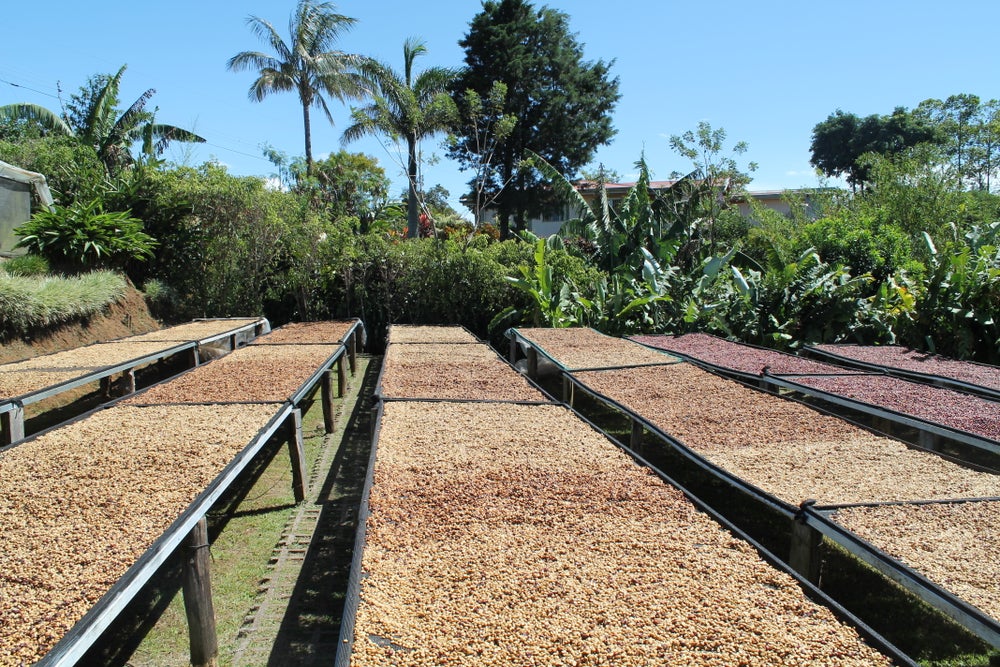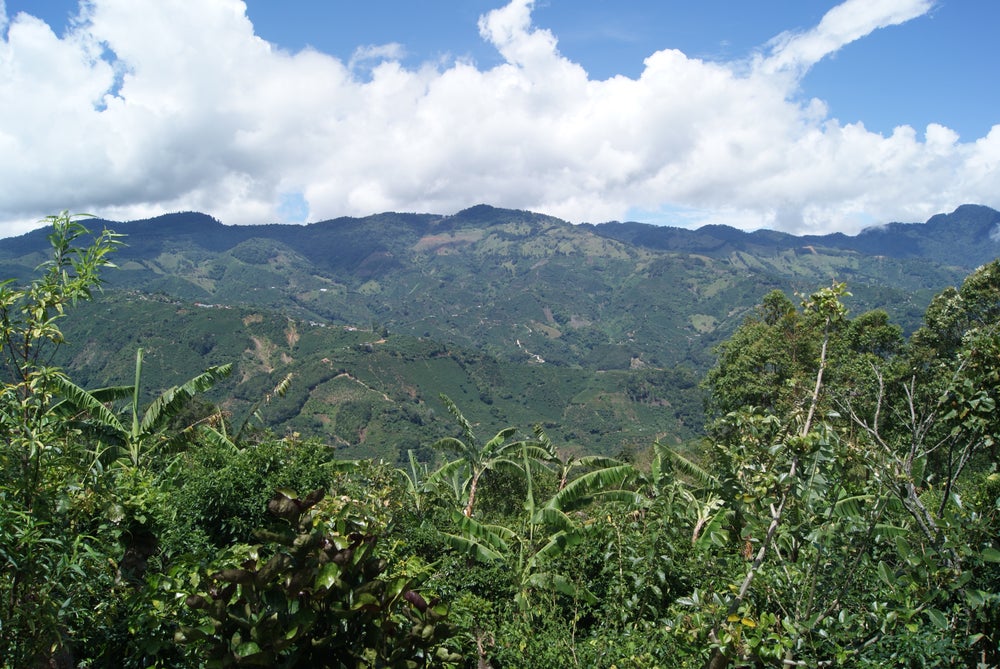About This Coffee
Coopeagri, Costa Rica’s largest farmer cooperative, was founded in 1962 to help increase production and market access for small- and medium-sized farmers in San Isidro de General. Today, Coopeagri boasts more than 10,000 members.
Today, Coopeagri continues to focus on the wellbeing of members and their farming communities. They spearhead projects that range from building medical offices where members can access medical care to growing an already extensive agronomy support and outreach program.
The cooperative produces organic fertilizer that members can access to help them maintain ecologically healthy farms. They also run a local café that showcases the coffees their members produce.
Cultivation
The Brunca region is marked by mountainous terrain and volcanic soil. High altitudes provide the cool climates that are ideal for growing sweet and dense beans.
Harvest & Post-Harvest
Farmers selectively handpick cherry and deliver it to a nearby wet mill. The mill follows processing methods that are designed to carefully protect the environment from degradation. In Costa Rica, this typically means using centrifugal force to remove mucilage, in lieu of fermenting. This method helps reduce water use and limit the amount of excess nutrients in water runoff from the mill. Parchment is washed and sundried.
Strictly Hard Bean (SHB)
Strictly Hard Bean (SHB) specifies the altitude at which the coffee was grown. A coffee must be grown at 1,200 meters above sea level or higher to be considered SHB. The higher altitude and lower temperatures mean that the coffee fruit matures more slowly, creating a denser bean.
European Preparation (EP)
EP stands for European Preparation. EP beans are Screen 15+ with a low defect tolerance.
Coffee in Costa Rica
Thanks to tireless innovations, the sheer number of coffee varieties, extensive technical knowledge and attention to coffee production, Costa Rica is one of the most advanced coffee producing countries in Central America.
The climatic conditions in the country also play a role in the high quality of coffee produced. There are eight coffee regions: Guanacaste, West Valley, Turrialba, Valle Central (Central Valley), Tres Rios, Brunca, Orosi, and Tarrazú, a specific part of Valle Central.
Costa Rica has also become a world leader in traceability and sustainability in coffee production. Ninety percent of the country’s 50,000 coffee farmers are smallholders, and today, many deliver their cherry to boutique micro-mills that often process cherries according to producer specs to retain single-lot or single-farm qualities.
The rise of micro-mill processing, in itself, is a relatively recent development. Prior to the early 2000s it was common for smaller producers to deliver their cherry to cooperative-owned mills. As lucrative specialty markets developed, more and more farmers began establishing mills on their own farms, giving them increased control over processing and more assurance of the ‘traceability story’ so important to the growing market segment. Mills with excess capacity would then offer their services to neighboring farmers, offering a range of processing methods for small lots along with full traceability for roasters and importers. The system has enabled Costa Rica’s small to mid-sized coffee farmers to offer a wide range of differentiated products. Today, specialty lots from Costa Rica are almost as likely to bear the name of the micro-mill where they were processed as that of the producing farm.
The typically uncertain and dry weather patterns in Costa Rica make coffee farming more difficult. Long dry seasons and unpredictable weather patterns have virtually eliminated the possibility of organic farming. Nonetheless, both the government and farmers have taken active steps to protect the environment. Some of these restrictions also inform the processing methods for which Costa Rican coffee has become known.

